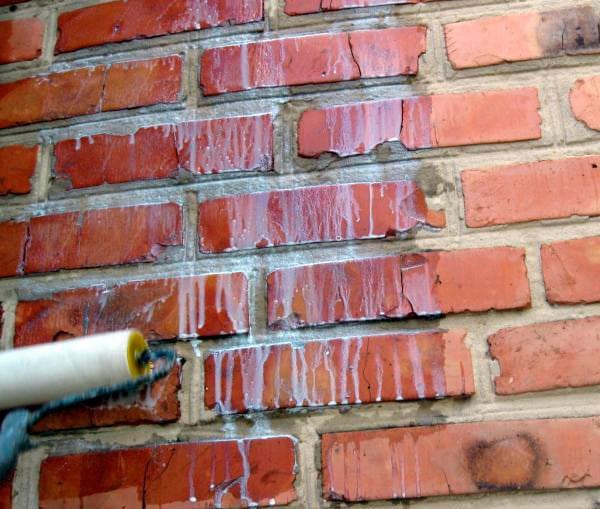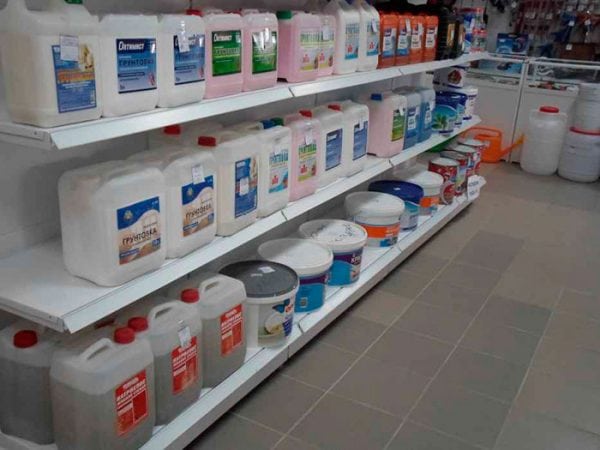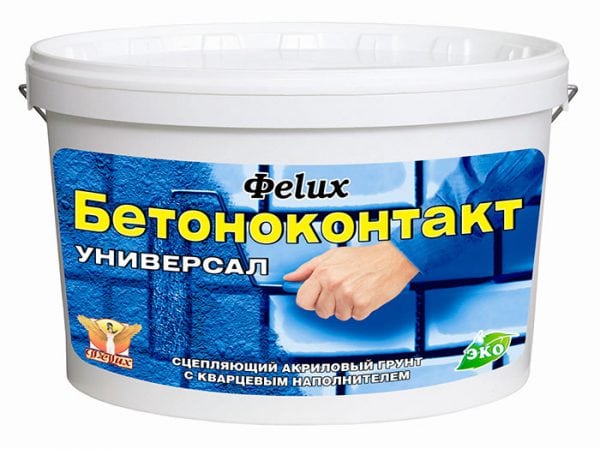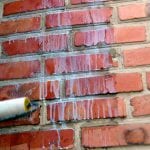Before applying any topcoats, the base must be primed. For outdoor use, the primer must be very durable, as the external elements are particularly susceptible to adverse factors.
This article will discuss the features of primers and primers outside the building.

Destination
Priming serves the following tasks:
- the composition gets into small cracks and pores, cementing them and strengthening the surface;
- surface life increases;
- the quality of adhesion increases (this is especially important when it comes to metals, plastics, concrete or smooth stones), due to which the period of the next repair is delayed;
- there are opportunities for contact between incompatible materials;
- thanks to closed pores, the ability of the base to absorb paints, varnishes and other consumables is reduced, which increases the efficiency of repairs;
- the hygroscopicity indicator is equalized, due to which the varnish or paint is distributed more evenly;
- the primer does not allow the base to disintegrate, because such substrates as concrete, brick or plaster only seem to be solid, but in reality they are a collection of particles constantly exfoliating in the form of dust;
- the composition may include antiseptic agents, flame retardants and fungicides that protect the base from putrefactive and fungal processes, flame, dampness and other harmful environmental influences.
Criterias of choice
When choosing a primer, the following factors must be taken into account:
- Type of coating to be applied to the substrate in the future. There are universal compositions, but primers are more common, specially created for a specific type of coating, for example, for alkyd paints or for gypsum plasters.
- The material from which the base is made. The compositions of primers for metal are different from those for polystyrene or concrete.
- Scope of use. There are soils for wet and dry, warm and cold climates.

Primers for external use have a number of characteristic properties:
- Atmospheric resistance, which lowers the susceptibility to abundant moisture falling out in the form of precipitation, temperature fluctuations (subzero temperatures, melting-freezing), and solar radiation.
- A prerequisite is the presence in the composition of antiseptics and fungicides that protect against mold and fungus.
- If we are talking about a metal base, the mixture should contain rust inhibitors, antioxidants and other substances that impede corrosion processes.
- Water repellents are added to the mixture for wood processing.
- For street conditions, it is important that the compositions contain an additional volume of bonding and film-forming components.
to contents ↑Note! When choosing a suitable mixture, it is worth choosing complexes from one manufacturer in which the primer is sold together with putty, paint or other material applied to the surface. The complexes are initially compatible with each other, which positively affects the quality of work.
Types of primers
According to the functions performed, mixtures are divided into the following types:
- deeply penetrating (designed to strengthen the structure of the material);
- textured (aimed at filling the pores in the material);
- insulating (often called impregnation) - are used to protect from the negative effects of the external environment, chemical compositions, mechanical damage (impregnations include primers based on polyurethane, silicone and epoxy).
- antiseptic.
By surface type, the compositions are as follows:
- for a smooth surface - they are used as waterproofing before applying paint or plastering;
- for cellular concrete (characterized by high viscosity, include silicate) - eliminate pores, but hardly strengthen the material:
- concrete contact - increases adhesion.

Preparatory work
As an example, we use the preparation of a concrete base for priming. This material is characterized by a finely dispersed monolithic structure. To put it more simply, it is almost smooth. Characteristic features of concrete in contact with other materials:
- adhesion with putties, adhesives and wallpaper is very poor;
- putty very soon begins to peel off;
- cracks appear on the plastered surface.
Preparatory work:
- thoroughly clean the concrete surface from dirt and dust (this can be done with a jet of water of high pressure);
- we wait for the complete drying of the surface;
- we get rid of all existing defects (cracks, bumps, etc.);
- apply a deep penetration composition that will strengthen the structure of the material;
- we level the base.
Priming
Work execution order:
- The primer composition is diluted in containers with water in accordance with the instructions of the manufacturer.
- The resulting composition is stirred and applied to the surface using a wide brush or roller with a long pile.
- The mixture must be applied so that no spreading or droplets are formed. Usually one layer is enough. However, if the material quickly absorbs the primer, repeat the procedure a second time.
- Finishing work can begin immediately after the drying of the soil (drying can take from 40 minutes to a couple of hours).
to contents ↑Note! It is necessary to prevent dust from entering the drying surface.
Conclusion
The use of primers is the key to successful outdoor decorating. Before purchasing this or that mixture, consult with sellers and carefully read the instructions.




